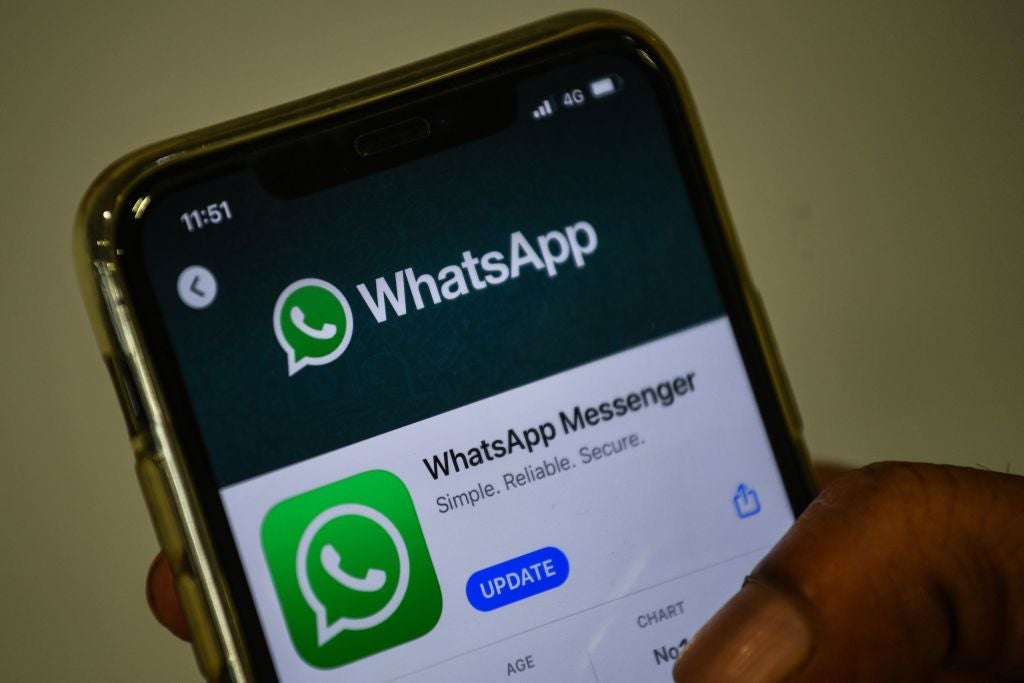WhatsApp update brings new multi-device feature that required ‘rethinking the architecture’ of chat app

Your support helps us to tell the story
From reproductive rights to climate change to Big Tech, The Independent is on the ground when the story is developing. Whether it's investigating the financials of Elon Musk's pro-Trump PAC or producing our latest documentary, 'The A Word', which shines a light on the American women fighting for reproductive rights, we know how important it is to parse out the facts from the messaging.
At such a critical moment in US history, we need reporters on the ground. Your donation allows us to keep sending journalists to speak to both sides of the story.
The Independent is trusted by Americans across the entire political spectrum. And unlike many other quality news outlets, we choose not to lock Americans out of our reporting and analysis with paywalls. We believe quality journalism should be available to everyone, paid for by those who can afford it.
Your support makes all the difference.WhatsApp has finally added multi-device support, one of its longest-rumoured and most-requested features.
The change will mean that people can use WhatsApp on their phone at the same time as four other non-phone devices, such as tablets or computers, all at the same time.
It required the company to “rethink WhatsApp’s architecture and design new systems”, it said, to ensure that the app kept the privacy and security features that have become central to its marketing.
The changes to the underlying architecture might also help explain why the update has taken so long to arrive, giving it features that have been present on other apps for years and which have been rumoured to be coming to WhatsApp for some time.
WhatsApp says that the new feature will work even when the phone’s battery is dead, which stands in contrast to the way the version of the app for desktop and web work at the moment. Currently, they simply show information that is sent to the phone – but it only works with one other version of the app, and if the phone dies so does that web or desktop version.
Instead, with the new update, each device connects to WhatsApp independently, the company said. It will sync both messages and other data such as contact names and more, and do so in the same end-to-end encrypted way that ensures chats cannot be read as they pass between users.
“To achieve this, we had to rethink WhatsApp’s architecture and design new systems to enable a standalone multi-device experience while preserving privacy and end-to-end encryption,” WhatsApp said in a blog post announcing the change.
The new version is rolling out in a limited public beta test that is expected to make its way to all users over time. It will roll out to users in its existing beta programme first, during which time WhatsApp will “continue optimizing performance and adding a few additional features before slowly rolling it out more broadly”, it said.
The old system had made it easy to make the phone and other versions of the app to stay in sync, since those “companion devices” only had to keep a connection to the phone and mirror anything that was on it onto their own screen.
But it also came with major problems, WhatsApp noted, including issues that made that connection unreliable. Companion devices are likely to disconnect if the phone is running out of battery or has a bad connection, for instance, and only one of them can be connected at any time.
Under the new system, the phone will not as act as the one “source of truth”. Instead, the changes to the underlying architecture of WhatsApp mean all versions of the app will be able to check in with WhatsApp’s servers directly, rather than the phone.
Systems are in place to ensure that the new service cannot be abused by signing up other devices to a person’s account so they can read their messages, WhatsApp said. They include a range of technologies to allow people to check all the devices that a message is being sent to, and the requirement of biometric ID to link a new device to an account.
Even though the phone will no longer be the central device for any acccount, the app will work to ensure that message history and other information – such as new contacts, or muted chats – are kept in sync across various different versions. That information will be stored on WhatsApp’s servers and encrypted so that other devices will be able to check it when it is needed.
Join our commenting forum
Join thought-provoking conversations, follow other Independent readers and see their replies
Comments